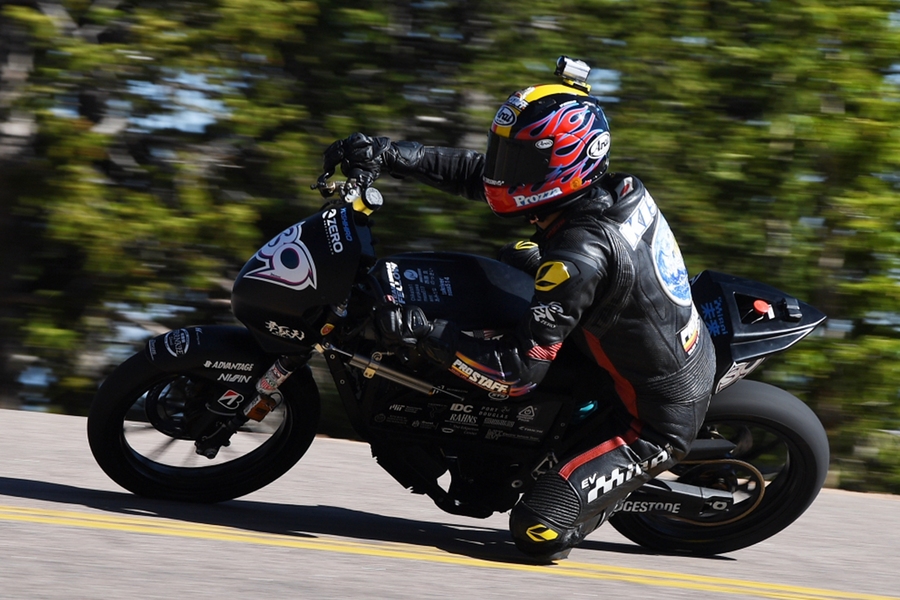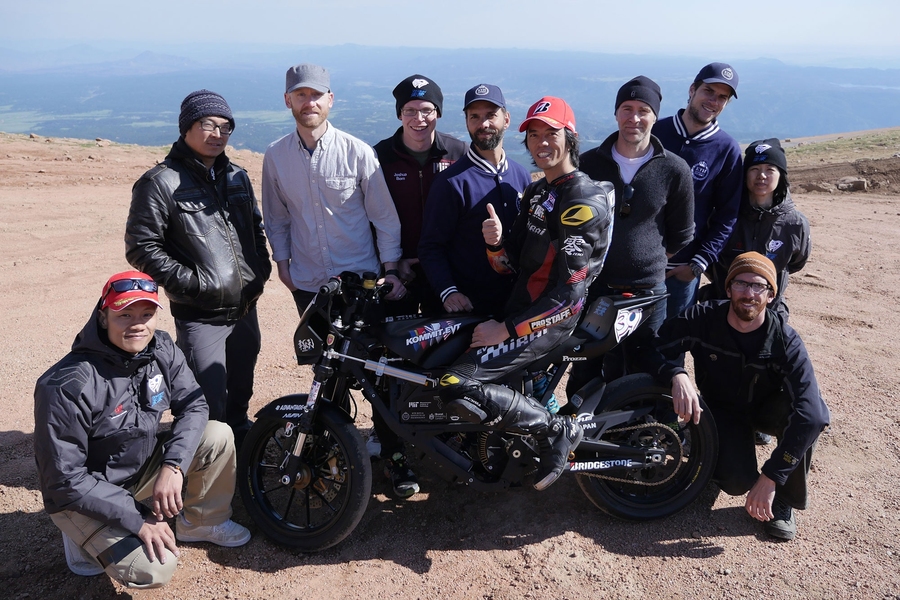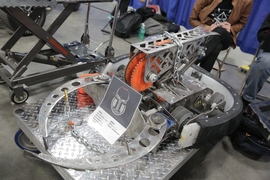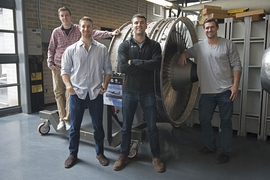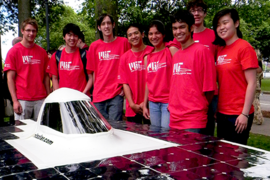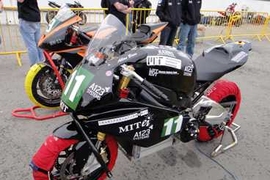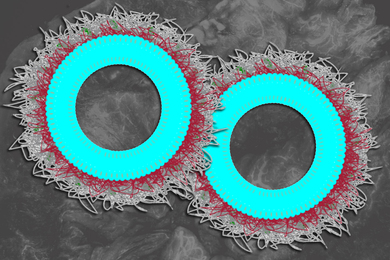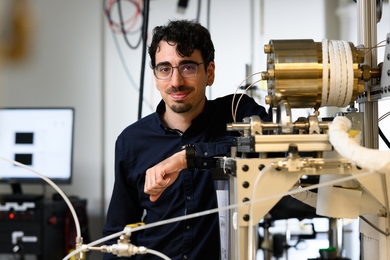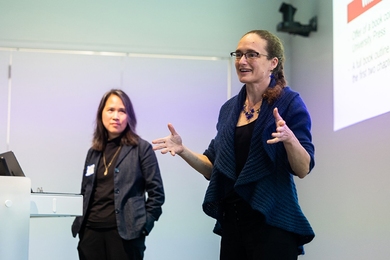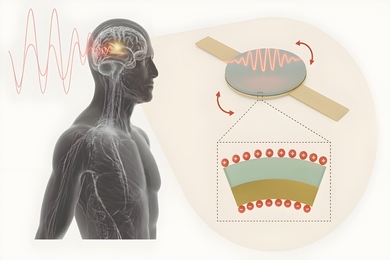In a race up a spectacular and treacherous mountain road to the 14,110-foot summit, the KOMMIT Electric Vehicle Team (EVT), led by members of the MIT Electric Vehicle Team and professional rider Yoshihiro Kishimoto, finished second in the electric motorcycle division of the Pikes Peak International Hill Climb (PPIHC) on June 26 in Colorado. Also known as the Race to the Clouds, this was the 100th anniversary of the car and motorcycle race that is 12.5 miles long, climbs 4,725 feet, and turns 156 times.
The team finished the course in 11 minutes 10.480 seconds closely behind the winning team, Victory Racing (Polaris Industries’ professional racing team), which posted a time of 10 minutes 17.813 seconds.
MIT EVT recruited a diverse set of partners from industry and academia to form KOMMIT EVT: Motorcycle manufacturer Zero Motorcycles provided engineering and hardware support while race companies Komatti from the Isle of Man and Mirai EV of Japan as well as Sweden’s Royal Institute of Technology (KTH) and London’s Brunel University joined the challenge.
MIT graduate student Mark Jeunnette, crew manager for the project, remarked that “we had a few components fail during testing such as the motor controller, battery charger, main contactor and we had other logistical challenges such as shipping motorcycles, components and tools to and from Japan.”
Early wake up calls made for a rigorous day. Practice sessions on the mountain took place from 2:30 a.m. to 10 a.m. four days in a row as the Pikes Peak road opens to the public at 9:30 a.m. daily except for race day. Debugging and fixing occurred until midnight before the testing cycle repeated.
“All of these challenges turned the race and effort leading up to it into a real marathon,” Jeunnette said.
The team also received support and encouragement from their competitors. “One of the best parts was the support we got from the other electric bike teams. We borrowed an electrical connector from one team, and got electrical power from another team’s generator after ours had problems. It really felt like everyone was there to push electric vehicles further, not just to win,” Jeunnette added.
Team member Lennon Rodgers, a research scientist at MIT’s International Design Center (IDC), “really enjoyed being part of a global team working towards a common goal. Together we accomplished something that would be impossible to do individually — and we successfully navigated cultural and professional differences.”
Rodgers and Jeunnette, both MIT alumni, were MIT EVT members in the 2011 Isle of Man TT motorcycle race, in which the team placed 4th. “The Isle of Man project showed me the impact these design-build-race projects can have on engineering students. They attract a student that is not satisfied just solving textbook problems,” Rodgers stated in a recent PPIHC article. “The projects are so real and unforgiving that there is no room for fluff or bad engineering decisions. Through these projects, students learn to be great designers and manage risk.”
In addition to starting their own companies, past members of the MIT EVT have gone on to work at Google, Apple, Porsche, BMW, and Tesla.
Recruiting and developing these future engineering leaders has been Rodgers’ main motivation in his continuing work with the EVT. “I’m excited and encouraged to see the impact that former EVT students have on the electric vehicle, alternative energy, and autonomous vehicle fields,” remarked Rodgers.
The PPIHC entry grew from a dream into reality through a special section of Department of Mechanical Engineering design course 2.752 (Development of Mechanical Products) this past spring, which was taught by Rodgers; Alex Slocum, the Pappalardo Professor of Mechanical Engineering and director of the Precision Engineering Group; and research scientist Nevan Hanumara. The students involved in the project were mechanical engineering undergraduates Jarrod Smith ’16, Paige Reiter ’16, Josh Born ’16, Max Malinowski ’16, and rising senior Richard Huizar; Department of Materials Science and Engineering rising junior Sam Belden, and Department of Aeronautics and Astronautics grad students Sebastien Mannai and Kento Masuyama PhD ’16. Cecil Williams, a student from Harvard University, was also on the team. The team worked during the spring out of the Edgerton Center’s Milkdrop Shop and the International Design Center and was supported by the Edgerton Center, the Department of Mechanical Engineering, and the Office of Digital Learning.
With this second place win under their belt, MIT EVT looks forward to the upcoming year. Team members plan to publish a paper based on their Pikes Peak design and race data and to aim their focus on an electric car conversion project.
